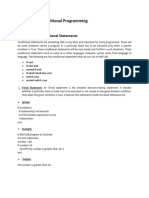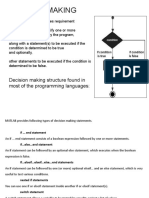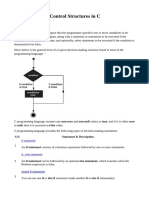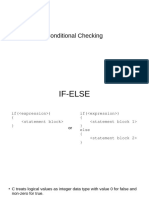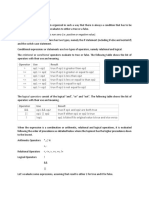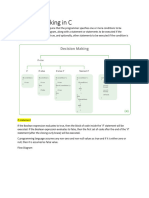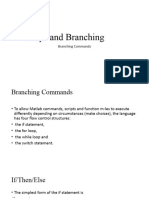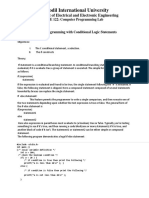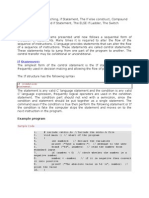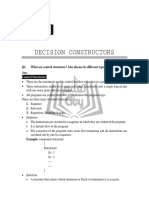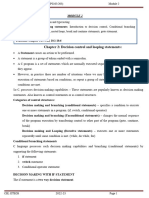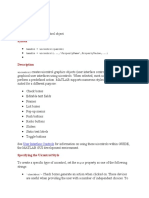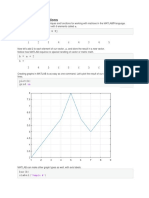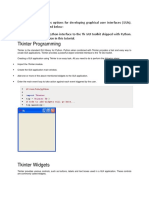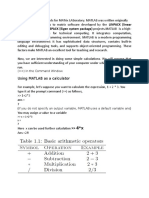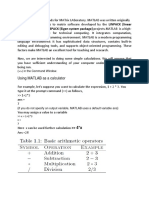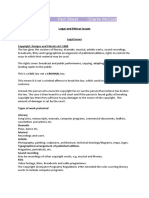0% found this document useful (0 votes)
72 views6 pagesMATLAB Conditional Statements Guide
This document discusses different types of conditional statements in programming languages including if/else statements, nested if/else statements, switch/case statements, and nested switch/case statements. It provides syntax examples and sample code to conditionally execute blocks of code depending on whether expressions evaluate to true or false.
Uploaded by
Himanshu SainiCopyright
© © All Rights Reserved
We take content rights seriously. If you suspect this is your content, claim it here.
Available Formats
Download as DOCX, PDF, TXT or read online on Scribd
0% found this document useful (0 votes)
72 views6 pagesMATLAB Conditional Statements Guide
This document discusses different types of conditional statements in programming languages including if/else statements, nested if/else statements, switch/case statements, and nested switch/case statements. It provides syntax examples and sample code to conditionally execute blocks of code depending on whether expressions evaluate to true or false.
Uploaded by
Himanshu SainiCopyright
© © All Rights Reserved
We take content rights seriously. If you suspect this is your content, claim it here.
Available Formats
Download as DOCX, PDF, TXT or read online on Scribd
/ 6

